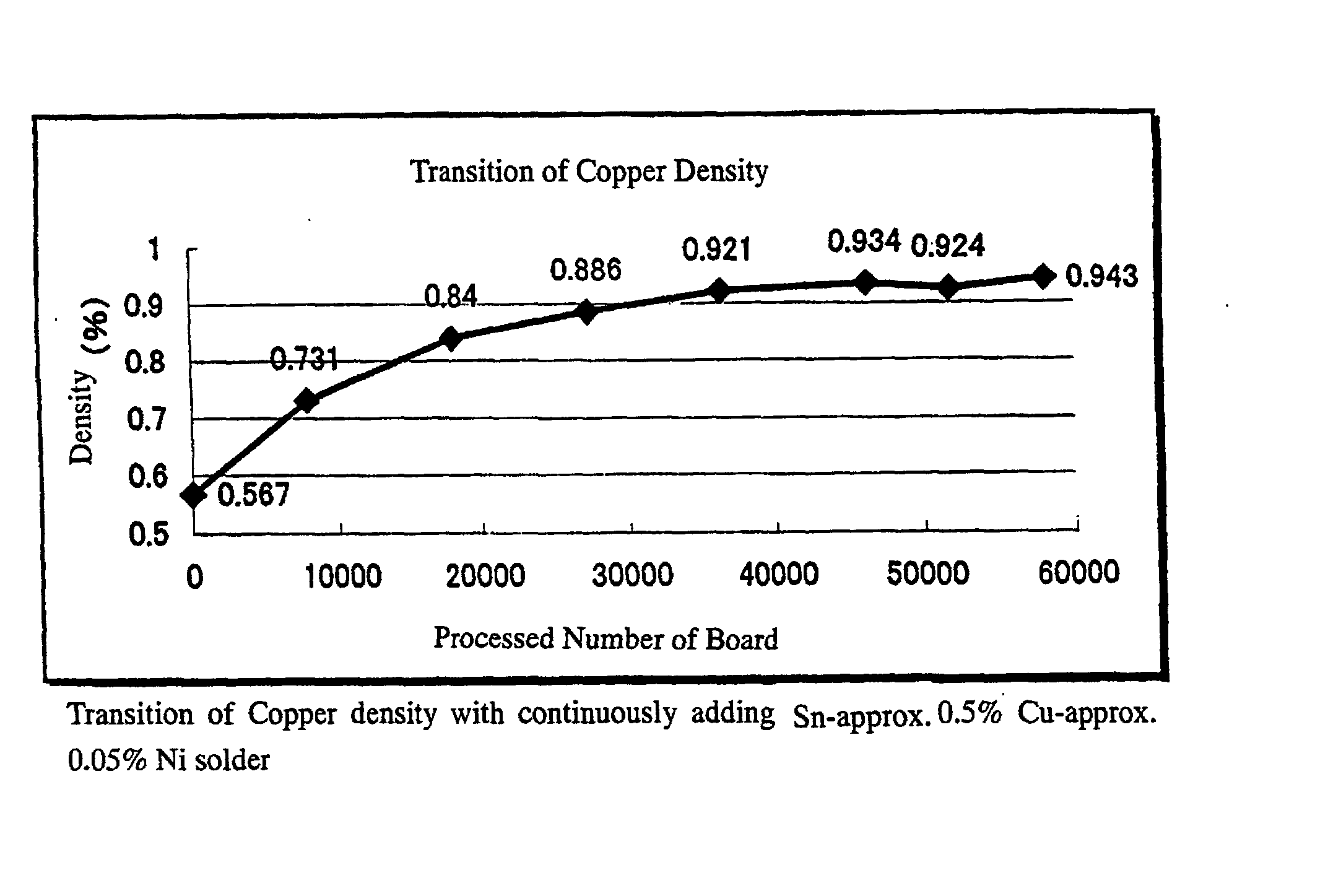A control method for copper density in a solder dipping bath
a control method and copper technology, applied in the direction of feeding apparatus, printed circuit assembling, non-electric welding apparatus, etc., can solve the problems of solder bridge, void, incomplete solder connection, solder spike, etc., and achieve the effect of substantially degrading the quality of the solder joint and replacement of the solder
- Summary
- Abstract
- Description
- Claims
- Application Information
AI Technical Summary
Benefits of technology
Problems solved by technology
Method used
Image
Examples
example 2
Of This Invention
[0021] A solder bath was filled with an initial solder alloy containing about 0.6% copper, about 0.05% nickel with an antioxidant metal such as germanium, phosphorus or calcium added in a proper amount and with the remainder tin. A soldering operation was performed at a solder temperature of 255.+-.2.degree. C. under the same conditions as those in the comparative example. A solder alloy identical to the initial solder alloy in the bath, but without copper, was replenished. As a result, like in the example 2, the copper density reached about 0.7% and flattened off and was stabilized at that level.
example 3
Of This Invention
[0022] A solder bath was filled with a lead-free solder containing about 0.6% copper, and about 0.05% nickel with the remainder tin. A soldering operation was performed at a solder temperature of 255.+-.2.degree. C. under the same conditions as those in the preceding examples. A Tin-Nickel solder without copper but with an antioxidant metal such as germanium, phosphorus or calcium added in a proper amount was replenished. As a result, like in the above examples, the copper density reached about 0.7% and flattened off and is stabilized at that level.
[0023] The solder alloys used were a Tin-Copper-Nickel alloy. Positively controlled element was only copper, and there is no need for controlling other elements. This is true of the alloys which contain silver, bismuth, indium, phosphorus, germanium, etc. for improving wettability or for anti-oxidation.
[0024] The present invention positively controls, in a molten solder in a bath, copper which is an essentially required m...
PUM
| Property | Measurement | Unit |
|---|---|---|
| Temperature | aaaaa | aaaaa |
| Percent by mass | aaaaa | aaaaa |
| Angle | aaaaa | aaaaa |
Abstract
Description
Claims
Application Information
 Login to View More
Login to View More - R&D
- Intellectual Property
- Life Sciences
- Materials
- Tech Scout
- Unparalleled Data Quality
- Higher Quality Content
- 60% Fewer Hallucinations
Browse by: Latest US Patents, China's latest patents, Technical Efficacy Thesaurus, Application Domain, Technology Topic, Popular Technical Reports.
© 2025 PatSnap. All rights reserved.Legal|Privacy policy|Modern Slavery Act Transparency Statement|Sitemap|About US| Contact US: help@patsnap.com


